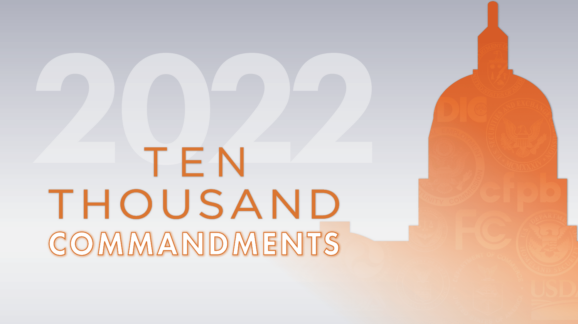Agency Notices in the Federal Register Merit Close Monitoring by Congress

Photo Credit: Getty
Along with presidential proclamations like executive orders and memoranda (examined recently here) are those of departments and agencies, which are numerous and sweeping. Without passing a law, government entities can signal expectations, specify parameters for, and influence various pursuits—including health care, retirement, education, energy production, finance, land and resource management, science and research, and manufacturing—through various kinds of guidance documents, notices, and policy statements. These may not appear in the Federal Register, and are troubling given the Biden administration’s whole-of-government approach to various progressive aspirations.
A prominent Obama-era proclamation was the Internal Revenue Service’s granting of waivers of the Patient Protection and Affordable Care Act’s employer mandate in defiance of statutory language. Significant in today’s setting are student loan forgiveness, the Department of Education’s change of eligibility rules on a website, the Federal Trade Commission’s guidance on disclosures for social media influencers and “Policy Statement Regarding the Scope of Unfair Methods of Competition Under Section 5 of the Federal Trade Commission Act.” Eviction moratoria extensions by both the Trump and Biden administrations were prominent developments. Other less attention-grabbing but noteworthy developments include the “Notice of federal guidelines” from the National Highway Traffic Safety Administration on “Cybersecurity Best Practices for the Safety of Modern Vehicles” and pipeline disruptions of east coast fuel service during a May 2021 ransomware attack despite a preexisting dedicated Department of Energy “Emergency Response Organization.”
Lessons unlearned, the country proceeds with federally directed electric vehicle charging networks and drone airspace management to be substantially governed by guidance, government-run payment systems, and a central bank digital currency project.
As the House Oversight Committee detailed in the 2018 report Shining Light on Regulatory Dark Matter, at least 13,000 guidance documents had been issued since 2008, of which only 189 had been submitted to both Congress and to the Government Accountability Office as required by the Congressional Review Act. In addition, at least 536 were “significant,” but only 328 were submitted to the Office of Management and Budget for review.
Even the 13,000 documents agencies reported to Congress were a grave undercount. Former President Donald Trump sought to address guidance in 2019’s Executive Order 13891, “Promoting the Rule of Law through Improved Agency Guidance Documents,” which established online portals and inventories at agency websites.These portals and disclosures were eliminated by Biden. Nonetheless, a count derived from this author’s August 2022 survey of agency guidance portal remnants topped 107,000 entries. While light-years from being comprehensive, even this partial tally would not have been possible without the Trump order, a fact that congressional overseers need to keep in mind. As it stands, disclosure could deteriorate, since the formal rulemakings on guidance procedures that E.O. 13891 also required of agencies have been likewise systematically eliminated by nearly all of the 32 departments and agencies that adopted them. At Biden’s behest, they literally wrote actual new rules to disavow and eliminate the nascent disclosures.
Reporting of guidance or notices in the Federal Register was never reconciled with agencies’ guidance document portals prior to Biden’s elimination of the project, but should be a goal in a future restoration. In the meantime, certain public notices issued throughout the year appear in the Federal Register alogn with final and proposed rules,.
Unlike the hard guidance documents the House committee sought, these typically consist of non-rulemaking documents such as meeting and hearing announcements and agency organizational material. But yearly public notices, numbering in the tens of thousands, can also include memoranda, bulletins, guidance documents, alerts, and other proclamations that may be consequential to the public and may overlap with what would have materialized in a portal project carried to fruition.
The chart below depicts the number of notices published annually in the Federal Register, which peaked at over 26,000 in 2010 and 2011. Standing at 22,505 at the end of 2022, notices have dipped below 24,000 only seven times since 1996. While they were not a sea change, the dips during the Trump “deregulatory” years have reversed. And while many notices may be regarded as trivial, there have been 683,595 public notices since 1994 and well over one million since the 1970s.

Increased reliance on guidance and notices, if allowed, will render the effects of central government intervention and displacement of private activity even less transparent than they already are. Policy makers should pay greater attention to the “notices” component of the Federal Register while also recognizing that much guidance does not appear there, and address federal guidance documents in a comprehensive way.